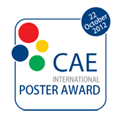
| |
EnginSoft - CAE Conference Abstracts
EnginSoft International Conference 2011 |
Improving the Design and the Separation Performances of Membrane Modules for H2 Purification by CFD Simulations |
Montante Giuseppina - Università di Bologna (Italy) |
Abstract |
In this work the impact of the non-ideal fluid flow features on the performances of gas separation membrane modules is investigated and the benefits of adopting the CFD simulation to the design and optimization of the pilot membrane module are shown. Specifically, the case of a pilot scale module equipped with three Pd-Ag membranes, that are well-suited for the separation of H2 from methane steam reforming gas mixtures, is considered. Palladium-based membranes are characterised by an high capability to separate hydrogen from gaseous mixtures and are particularly significant for industrial application aimed at the production of ultra pure hydrogen. Among the critical issues of membrane modules for gas mixture separations, apart from the membrane properties, concentration polarization and non-ideal flow effects have been identified in previous works. As a result, in order to reduce the design uncertainties and to take into account all the fundamental parameters affecting the process, comprehensive modelling methods, which may ensure appropriate scale-up from laboratory to pilot or industrial scale module, are required. To this purpose, we have adopted a CFD method devised by our group, which was developed in the realm of Fluent 6. With our method, the velocity and the pressure fields of the gas mixture are obtained from the numerical solution of the mass and momentum conservation equations, while the species concentration distribution and the relevant permeate and retentate fluxes are obtained from a scalar convection-diffusion equation including a source term to tackle the mass flow of the species across the membrane. |
Back to index |



